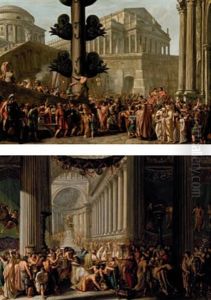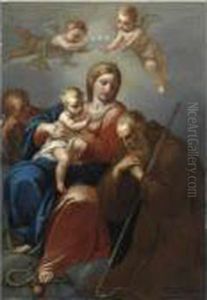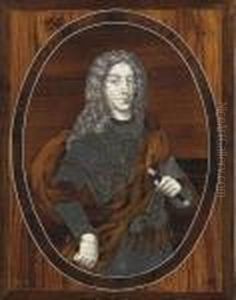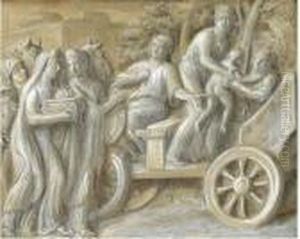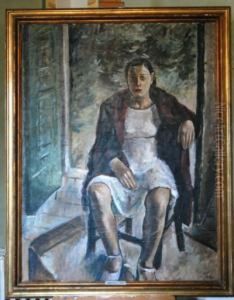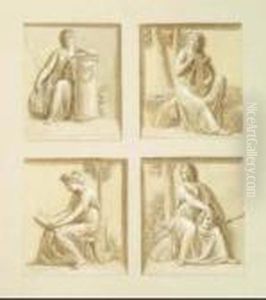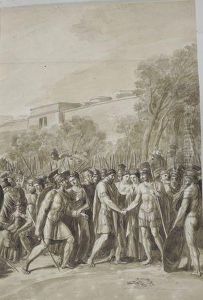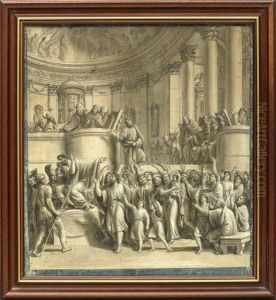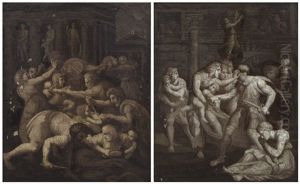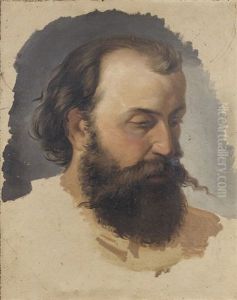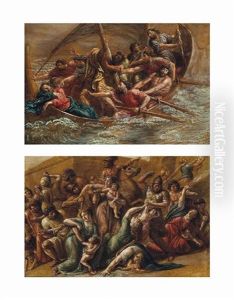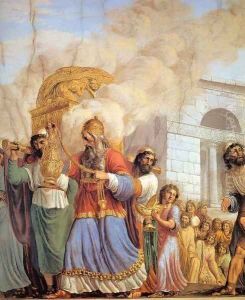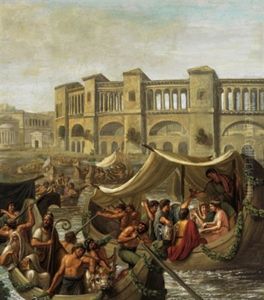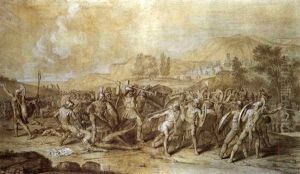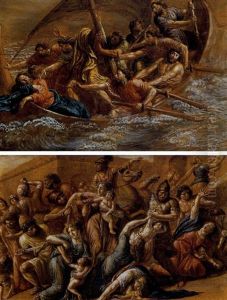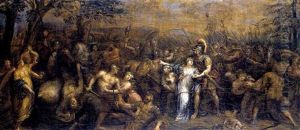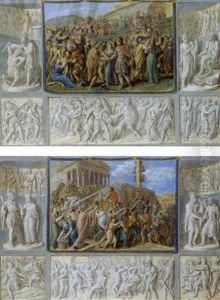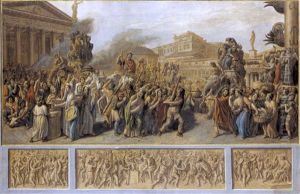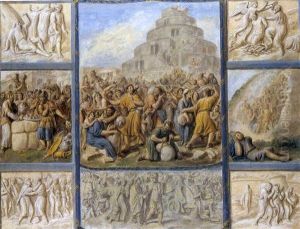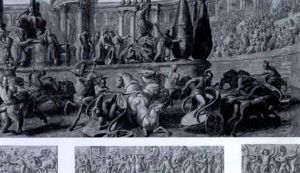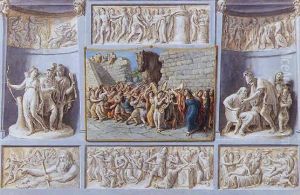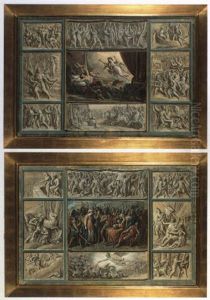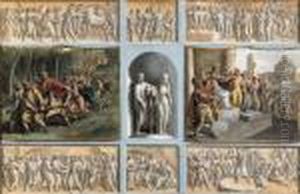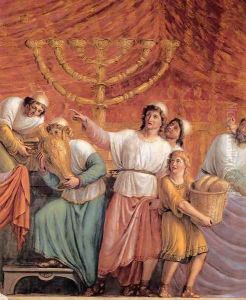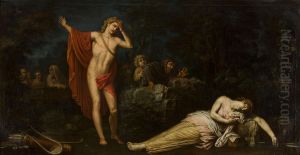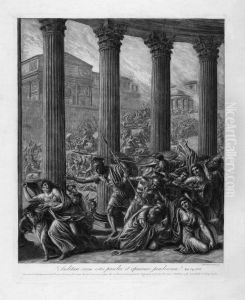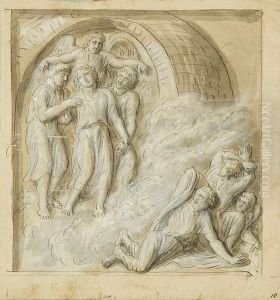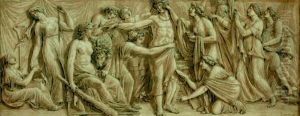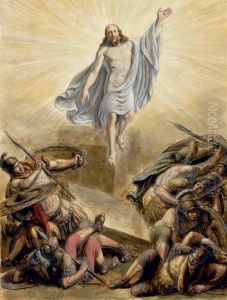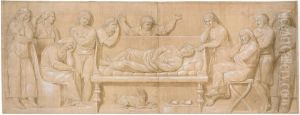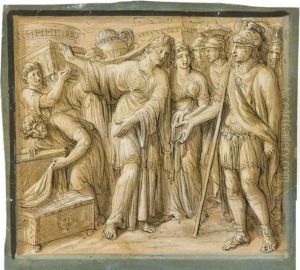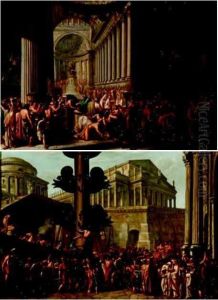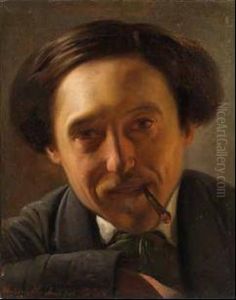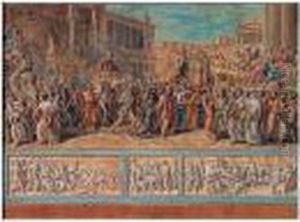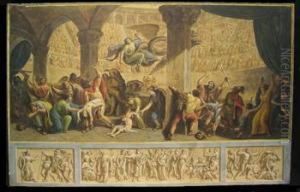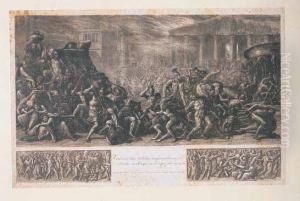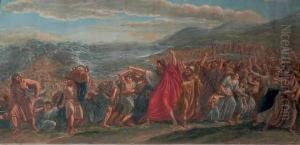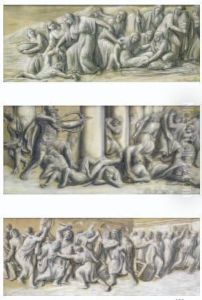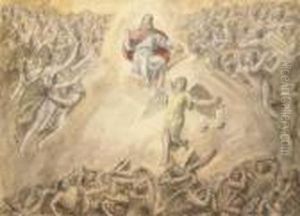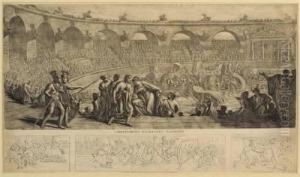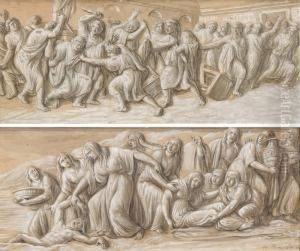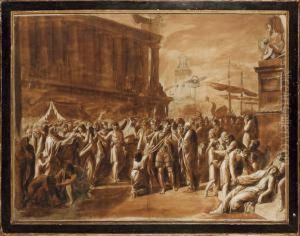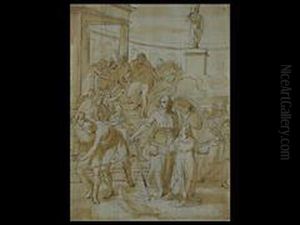Luigi Ademollo Paintings
Luigi Ademollo was an Italian painter active during the late 18th and early 19th centuries, known for his neoclassical style and historical subject matter. Born on April 30, 1764, in Milan, Ademollo was part of a period of art that valued classical antiquity and sought to emulate its principles in painting, sculpture, and architecture.
Ademollo initially trained under the neoclassical painter Giulio Traballesi in Florence before moving to Rome, where he was influenced by the works of Raphael and other masters of the Italian Renaissance. During his time in Rome, he came into contact with the circle of Anton Raphael Mengs, a German painter who was a leading proponent of neoclassicism. This experience further shaped Ademollo's artistic direction, steering him towards clear, harmonious compositions and a refined use of color.
In 1787, Ademollo returned to Milan and began working on a series of commissions for churches and palaces, including frescoes for the Royal Villa of Milan and the Palazzo Ducale in Genoa. His work was characterized by its grandeur and adherence to classical motifs, often depicting scenes from mythology and history with a sense of drama and attention to detail.
One of Ademollo's most significant works is the fresco cycle in the Chapel of the Holy Shroud (Cappella della Sacra Sindone) in Turin, which he painted between 1806 and 1809. These frescoes demonstrate his mastery of large-scale compositions and his ability to convey a narrative through visual means.
Throughout his career, Ademollo also worked as a scenic designer for theaters, where he applied his skills in creating evocative backdrops for operas and plays. His theatrical work further highlights his versatility and understanding of the dramatic potential of visual art.
Luigi Ademollo continued to paint and receive commissions well into his later years, leaving behind a legacy that reflects the ideals of the neoclassical movement. He died on February 11, 1849, in Florence. His body of work remains significant for its contribution to the visual culture of the period and as an example of the neoclassical aesthetic in Italian art.
